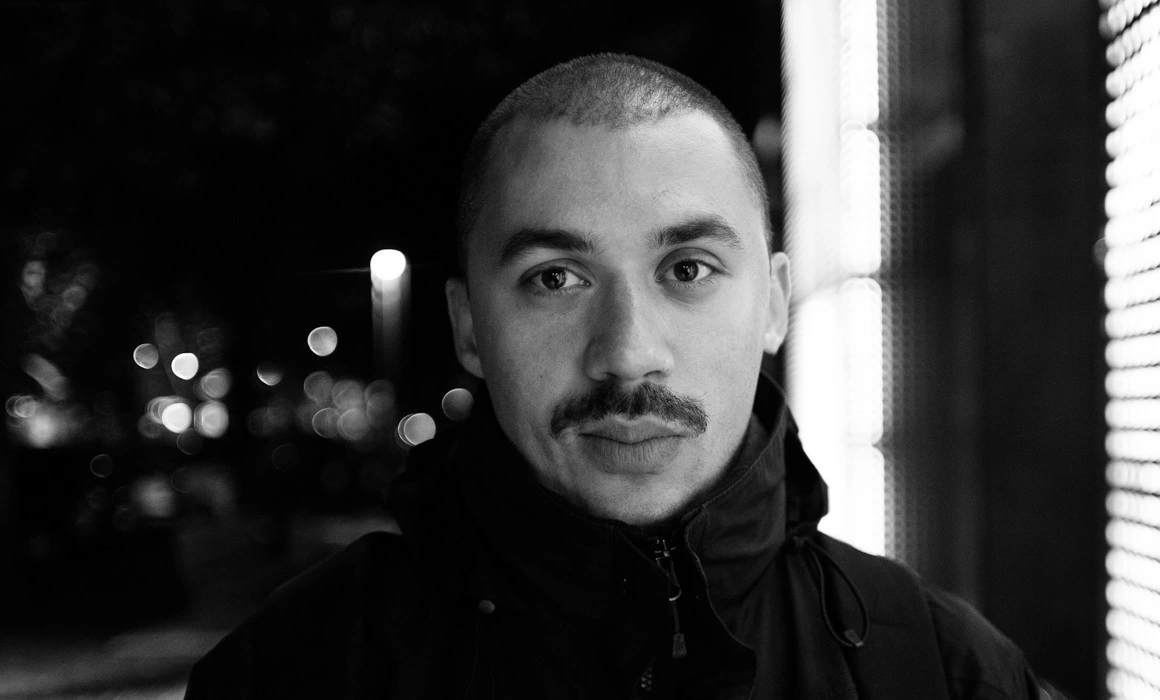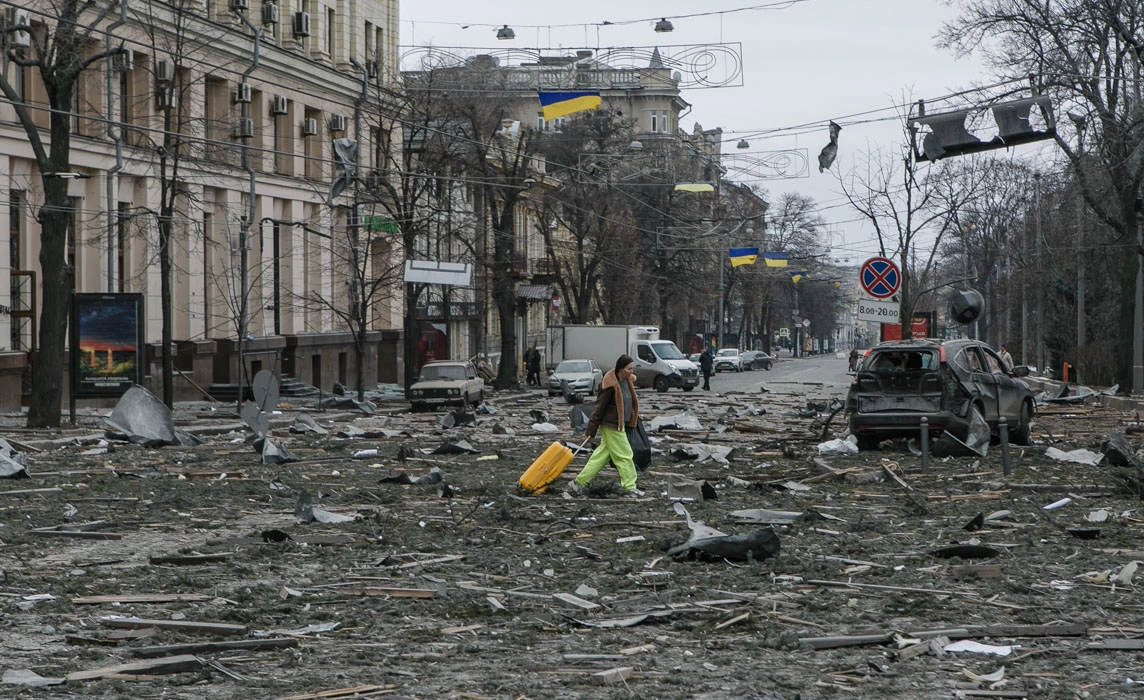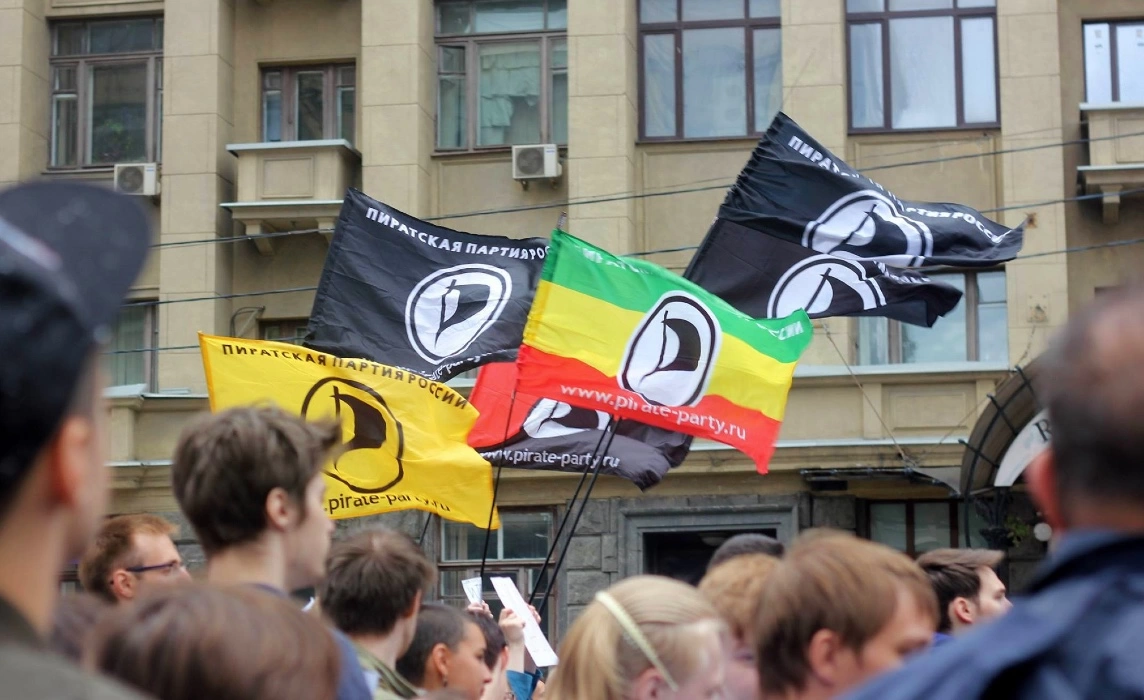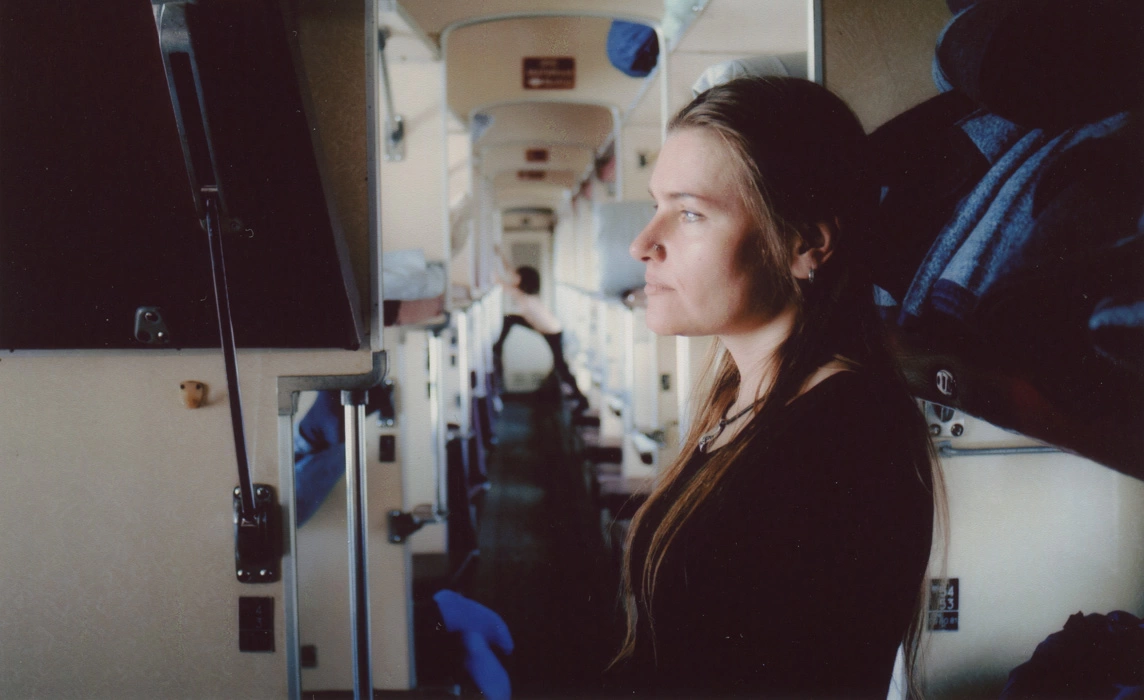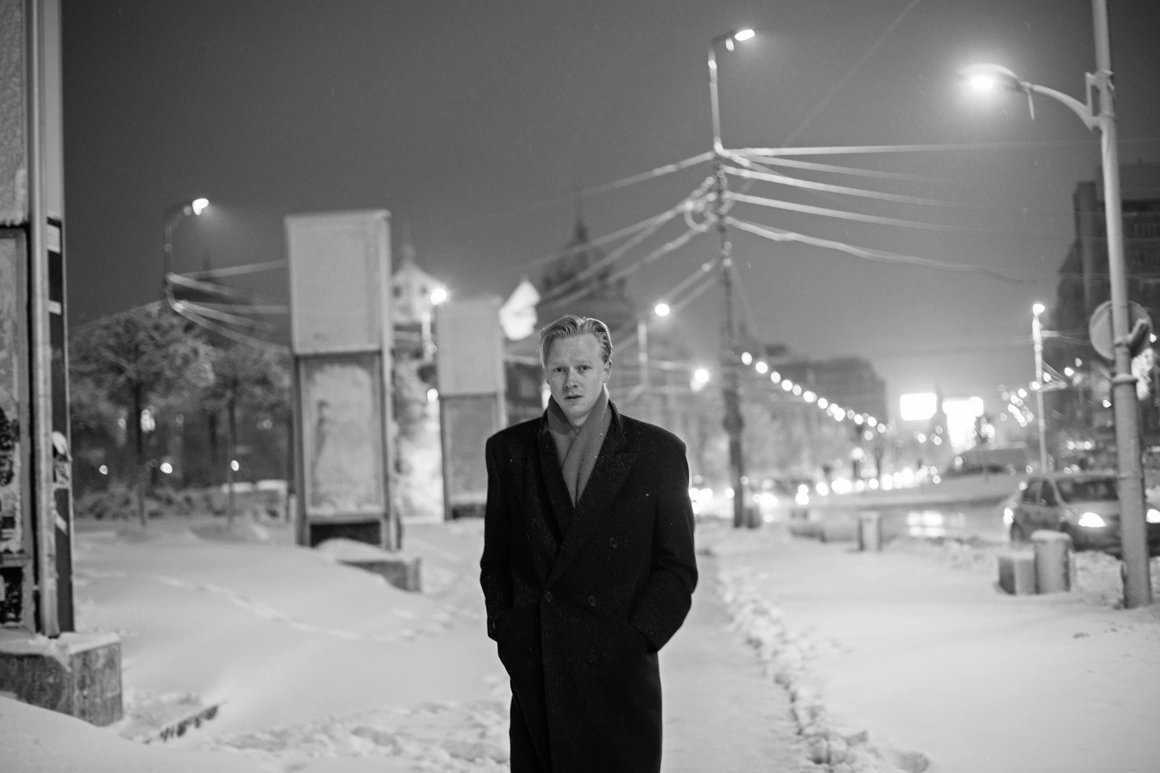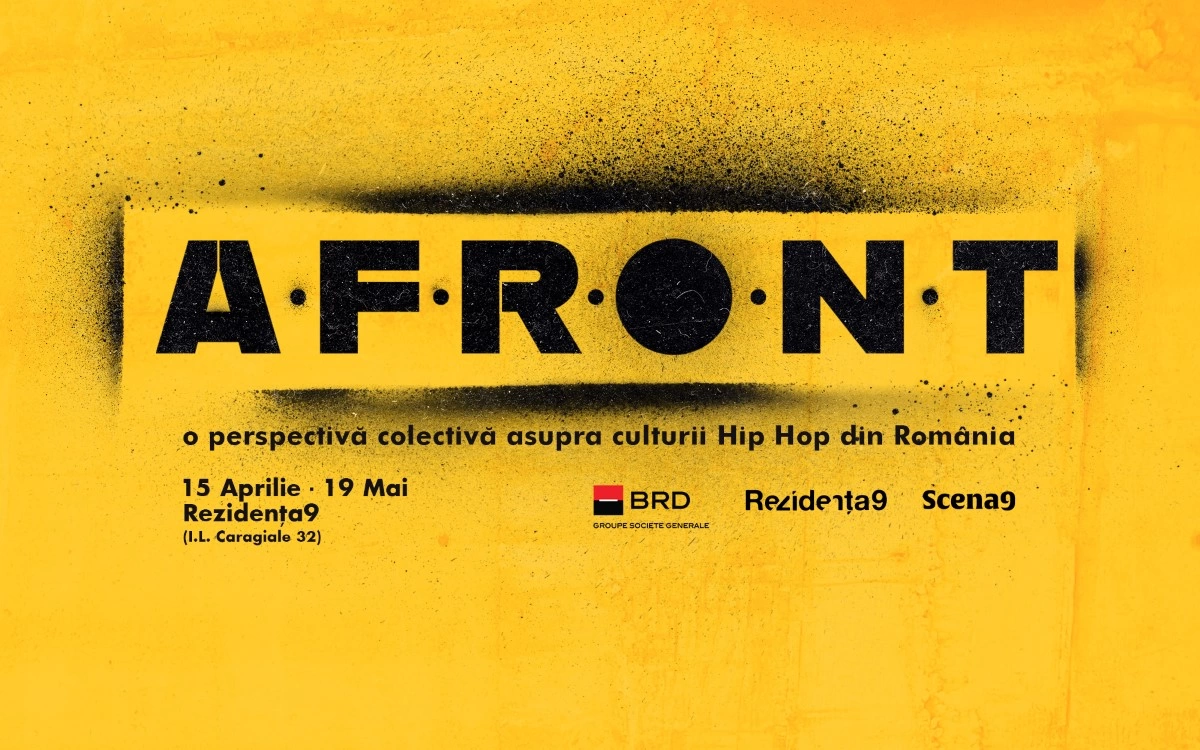I met Adi in college. We were colleagues at UNATC, Cinematography. He was one of the few there who weren’t just taking photos, but also processing the film with his own two hands, scanning the photos, photographing again and again. After he finished school, he dabbled in movie production, including animation (he adores stop motion), but I think his main love remains photography. Personally, I’ve always loved that in photos, I keep finding a reality that is very similar to the one I personally know. It’s always sensitive and poetic, just the way I see it. If you take a look at his photos, you can quickly realize that he’s not afraid to let you get to know him or to let you into his own Bucharest. He’s not friends with the people he photographs, but he respects then and he wants us to do the same. He likes Asian people. He makes you feel like a tourist in Bucharest; the same Bucharest where you’ve been used to cursing instead of taking your time, walking and enjoying the heavy cast iron fences, the old buildings and the people who pass them by. In just a few winter months, and one autumn month, in 2016, Adi collected over 200 images of another kind of Bucharest than the one you see every single day.
It took me a while to convince him to let me ask him some questions about his photography and I didn’t expect at all that our outing would take place on the same streets that he walks on almost every single night. We met in front of Odeon Theater and starting walking up on Victoriei, then took a left on Dacia until we got to Romana; next, we walked down on Magheru and end up in Victoriei again, just outside Novotel. All this time, we kept talking and I was stalling, waiting for him to raise his camera. I realized he wasn’t going to do this, while I was standing next to him, because that would have made him feel like too much of a show-off, so we sat down and talked in Cișmigiu Park.
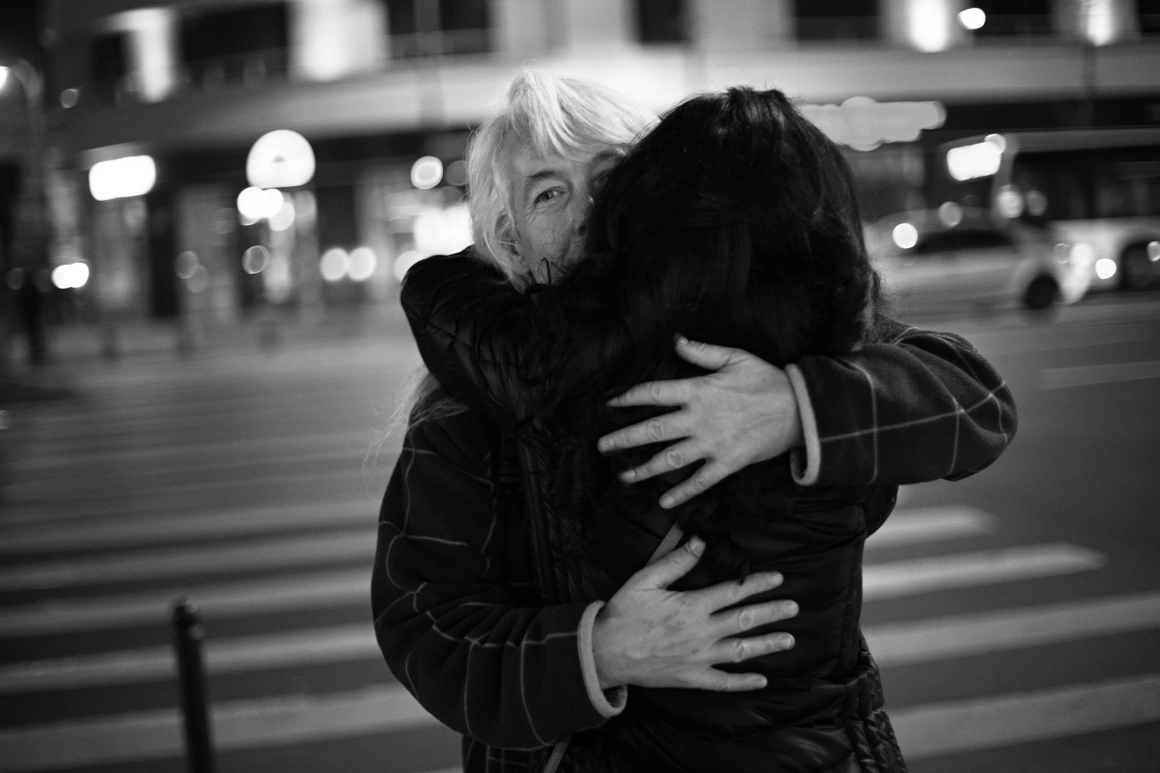
When did you start going out at night to take photos of Bucharest?
Around the beginning of January. I stopped during the spring and summer. In August, I didn’t even take one single photograph, there was nothing. I started swimming and running, I knew I would get back in to that, but I had no idea where the time went. I find it so interesting that swimming helps improve the way I take my photographs. I ended up swimming more and bettering myself, and I learnt to do the same in photography. Whenever I’m not in the mood to take photos, or I’m in a bad mood, I push myself. I realized that I’m not going to magically feel alright and in the mood to take photos, and that I need to put some elbow grease into it.
What makes you press the shutter button?
The reason became simpler and simpler, as the project progressed. If you had asked me a month ago, I would have given you a complex and well-thought answer. The truth is that it’s a thing I’m not really aware of at that moment. It comes from the subconscious, and I’ve just started to listen to it. For example, at first I was obsessed with finding a place where a person would show up for me to take their photograph, but I soon realized that the place has no importance at all, that it’s the person that matters, if you manage to get them at the right time. It’s how to get them and what they’re telling you that matters.
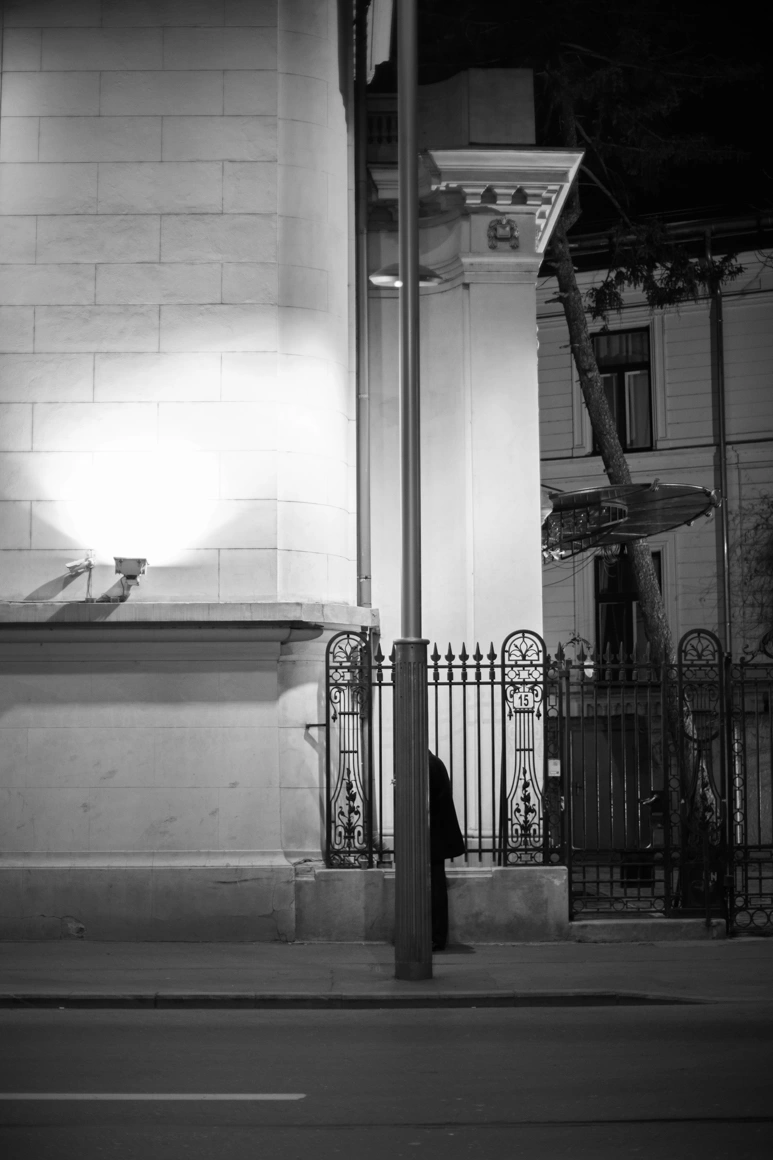
How did you decide that you would stick to black and white for this series?
It’s just a matter of taste. Besides, I feel that I can focus my attention more on what I want to shoot.
In your photography, Bucharest appears rather un-Romanian, or at least very different from the Bucharest you and I grew up in. What and who inspires you?
I realized that I loved Vivian Maier. At the beginning, Bresson was my father, I just thought he was incredible. But then, I started taking notice of more photographers. I love Diane Arbus and Robert Frank. I started seeing more photographs by Vivian Maier that I hadn’t seen initially, and now to me, she represents perfection. She doesn’t focus on one type of people, for example, the homeless. With her, it’s not about that, it’s about how that person looks and that is what I am interested in, too. It doesn’t matter that they’re wearing a suit or ragged clothes. I recently uploaded a photograph with a man wearing a strainer on his head. I didn’t take that photo to show how nuts he was. His face had nothing to do with what he was wearing. Maybe there are things that only I can see, that other don’t. I asked a guy why he liked that particular photo. Whether it amused him or he saw something in it. He was just amused by it. That’s not what I am looking for. I just find some things interesting and I think most people don’t have the patience to see those things. They can’t see them in photos and you don’t even have to look too hard or analyze them, to see them. If you like something, or if there is something that catches your eye, it’s because there is something there. Returning to Vivian Maier, I believe that she is the embodiment of all these awesome traits. And I am simply fascinated that on a film roll with 12 exposures, all of the photos she takes are cool. I have no idea how she did that.
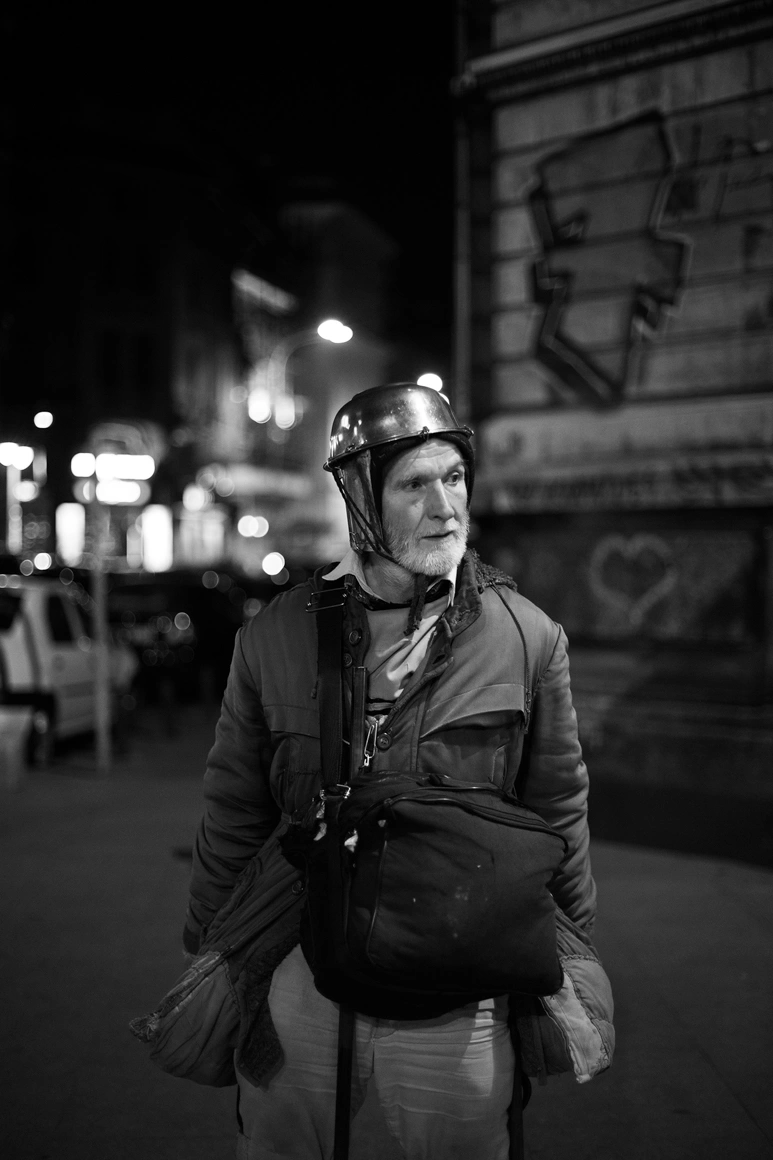
What is the percentage? How much do you photograph, how many photos do you like and how much time do you spend out on the streets?
Let’s say I was going to spend one hour on the streets. During that hour, I try to be as focused as I can. Sometimes, I stay for longer, but the more I stay, the more chances I have to get nothing. I can get nothing in one hour and then in 5 minutes, I get three good consecutive shots. I need to capture a very relaxed mood. I don’t take too many photos of the same subject. The more I shoot, the more I realize that I don’t really know what I’m shooting and that I do it just to make sure I get something. But when I look at what I’ve got, I see that there’s nothing. I usually take one or two photographs. I read at one point about a guy who took two shots maximum, but usually, just one. This way you get to have certain imperfections in your photos, but you accept that and move on.
What is your relationship with Bucharest?
Well, even though I was born here, until I started this project, I had no relationship with it whatsoever. So many times, I was under the impression that if I wanted to do something cool, I needed to go to other countries. But now I realzied that there are a lot of interesting people right here in Bucharest. Besides, the more I get to know more foreign people, the more I realize that we’re not all that different.
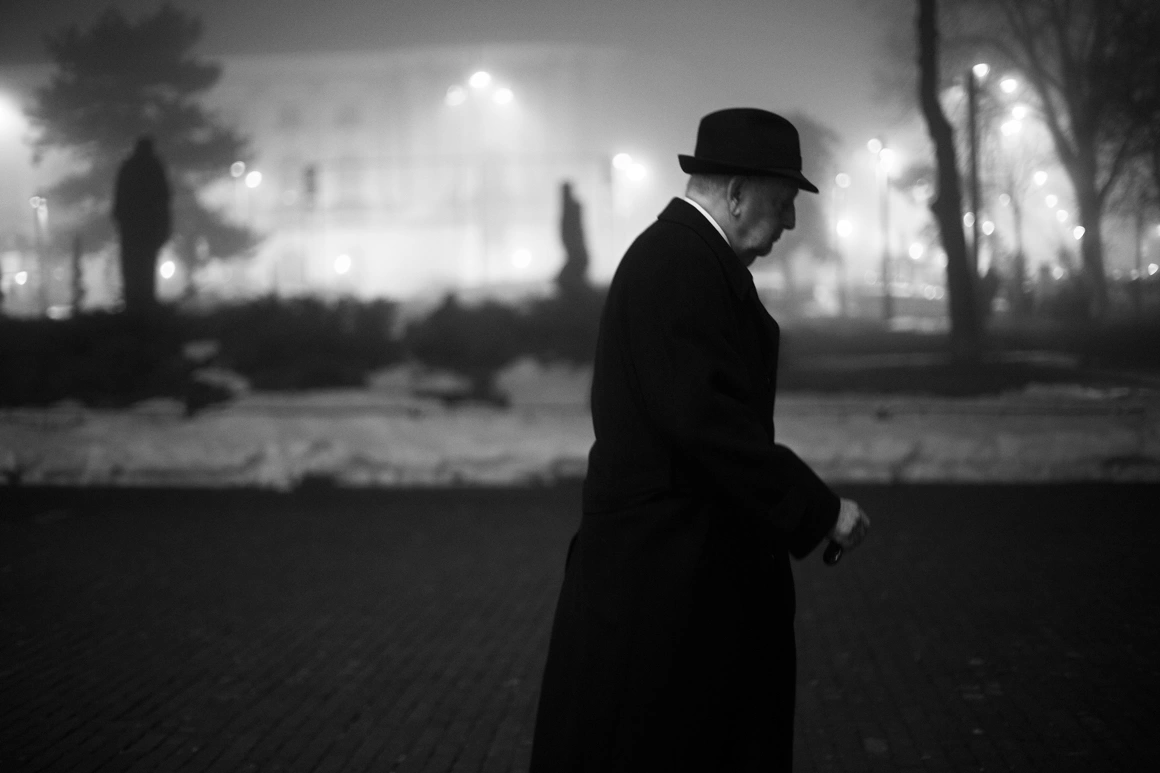
How do you think people feel when you’re photographing them?
They feel awesome, of course! I’m kidding. I experienced a very cool and powerful thing once, with a lady I saw on the street. I wanted to take her photograph, but I didn’t feel it was quite the right time to do it. After that, I ended up taking another route and I got exactly where she ended up being. It was just that moment where my head was in the right position, and I just raised my camera, while she was turned away from me. But then she turned towards me at the exact moment I took the photo. We synchronized so well, that I just couldn’t believe it was happening to me. I managed to get her at the exact moment before she transformed into another person, a person who is aware of their photo being taken. I think that’s the thing: to get them right before the moment that they know they’re being photographed. If they realize that, they’ll start posing and looking at you and you know that the moment is all wrong.
What other reactions do they have? Do you communicate with the people?
No, I don’t and I am not a communicative person. I like talking to people I know I have something to talk about, but this is a special type of communication, at least for me. I don’t think they would consider it special. I have no idea how they perceive it. I try not to be too invasive, even though I know I am. At least I’m not aggressive with them. Something really weird happened once with a guy who was exiting from a Mercedes on Magheru. I was coming from behind the car and I saw the back of his head – he was Asian. I don’t know, I’ve got this thing, I like Asian people. So, this guy came out, went to the front of the car and took out a child. In that moment, I was talking on the phone. The guy had all my attention, but I couldn’t hang up the phone, so I started taking photos. I wasn’t interested in the child, or the car, I was interested in him, but he thought I was taking photos of his kid and he got mad. I captured that exact moment when he started yelling at me, but I didn’t stop and I thought it was pointless to start explaining to him what I do, because he was already angry and all I would have done was excuse myself for a thing that I shouldn’t excuse myself for. What I personally think I do matters to me. I can’t go around explaining to everyone “here’s what I do”. And I would never apologize. For example, I never portray anyone in a bad light; it’s not something I set out to do, it’s just the way I am. I don’t think it’s fair to do that. I appreciate everyone I’ve ever photographed, I’ve never messed with or laughed at anyone.
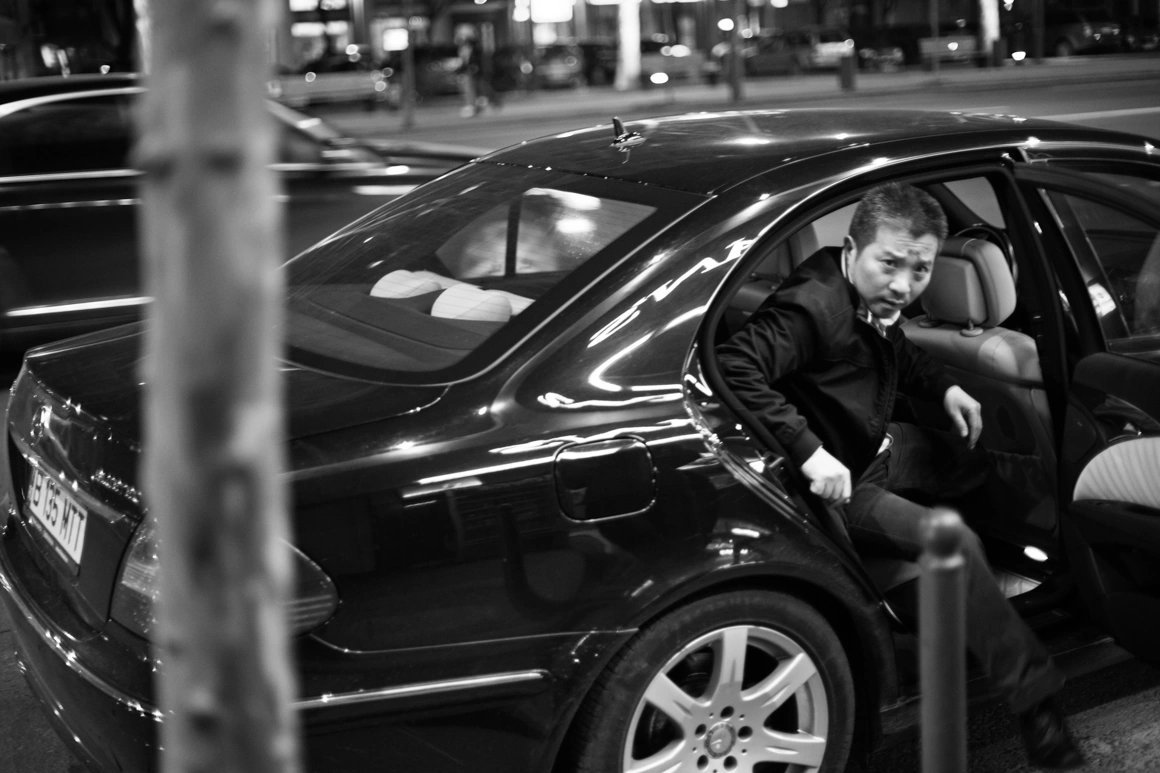
And you didn’t talk to anyone? You didn’t keep in touch with someone?
For me, these meeting are just moments in time. It’s something I cannot relive and I don’t want to relive. I feel that what I’ve shared with every single person is enough for me. If, somehow, it would appear to me that I haven’t exhausted this feeling I’m talking about, then I would probably give it another change. Anyway, as I was saying earlier, I already feel I’m intruding.
I know that the project is a work in progress. Where are you with it now?
I am still quite far away from what I would like to achieve. What I do know is that I can do so much more than this. It’s about finding peace, not accumulating knowledge. It’s about being careful about what you do every single moment, but not being careful of it. Only now I realize exactly where I’m heading. I’m trying to be less influenced by what I like in other photographers. What’s frustrating is that every time, it seems to me that I’m only just scratching the surface, and that makes me want to give up. It’s very easy to demolish everything I’ve done and loved at one point. Even if this sounds super weird, I think that it’s important to smack yourself, from time to time. Nobody has the capacity or the right to criticize what you’re doing, because they don’t have what you have, as a person.
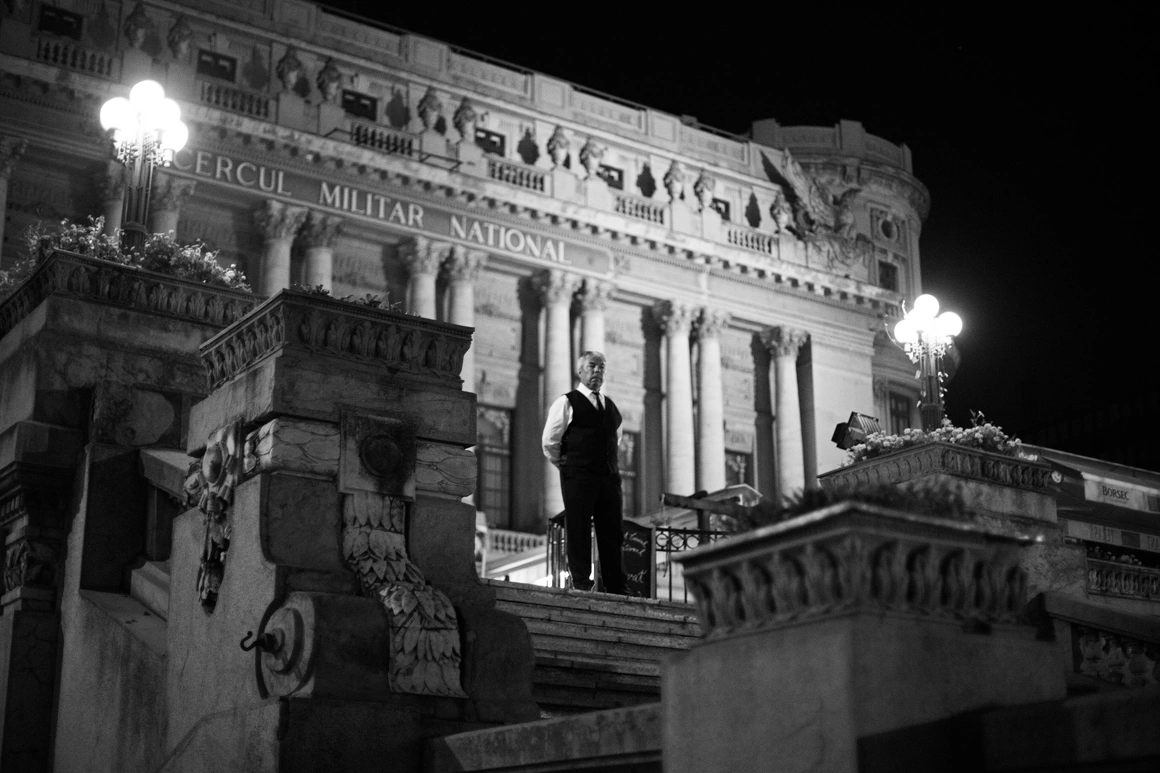
You’ve got plenty of photographs where the subject is behind a glass window. Tell me about that.
This happens more often in the winter and it is strictly connected to the time the sun sets. In the summer, you simply cannot take photos from behind a glass window, because it turns everything dark. In the winter, I go out at around 17:30 – 18:00, and at that hour the shops are still open. There is a big difference between what you can photograph on the street and behind a glass window. I think that people behind glass windows feel protected, as do I, to be honest.
What other projects are you working on?
A while ago, I started doing film photography in the subway. I’ve been thinking of going back to it. There’s another series I’ve been thinking of doing: I’ve been a photographer on the set of commercials and I realized that I am simply fascinated by the extracts more than I am by the actors. Most times, they’ve got these very expressive faces and as the hours go by, they start ignoring me and I can take their photograph as much as I want. Other than that, I love animation and I would like to get more stop motion projects as a director of photography.
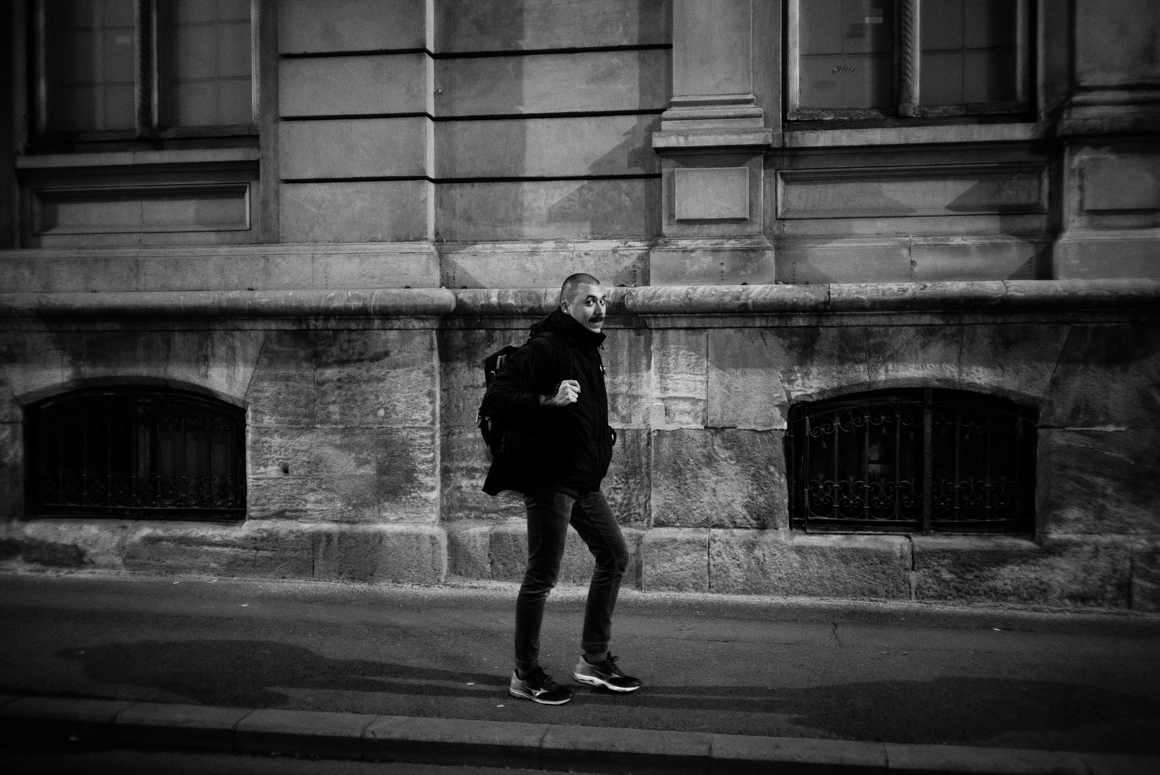
Now that we’re nearing the end of the interview, I must confess, that every time I see a new photo from you, I say to myself that I should start taking photographs of people on the streets, late at night, but then I stop when I realize that the idea is already taken.
No, you shouldn’t think like that. That’s exactly what I love about photography. If you think that you’re doing something that someone else is already doing, you’re wrong. You can’t do the exact same thing they’re doing. Street photography is a very broad term. I mean, there are so many people who have done it and who are doing it, you might as well never start a project yourself. Anyone can find something new, capture something else. Do it in color…
Adi Tudose is currently working on The Best Customer animation, as a director of photography.
Main photo: Adi Bulboacă
Translated from the Romanian by Cristina Costea.
